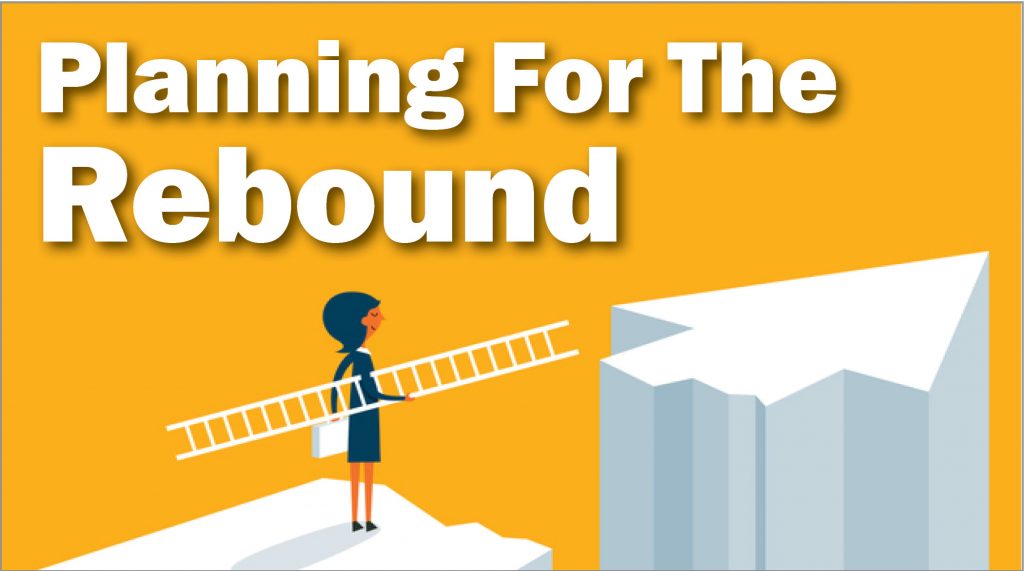Planning For The Rebound: Step 9 – Meal and Break Room Safety

It all started with the proverbial water cooler, and grew from there. These days employers commonly offer a space for their employees to take meal and rest breaks and may offer amenities such as a refrigerator, microwave, and communal utensils, plates and glasses for employee use. Throughout the day, these spaces are filled with employees talking about triumphant Dodgers wins and harrowing Giants losses, watching Friends reruns, and eating in close proximity to one another.
But with the global onslaught of the COVID-19 coronavirus, many employers are wondering: Is it still safe to operate communal eating facilities at work? And while there is no data to suggest that COVID-19 can be transmitted through properly cooked and handled food, the coronavirus can live on surfaces for quite some time, and is highly transmissible in locations like communal kitchens, where people are gathered in close proximity for extended periods of time.
Because of the increased potential for transmission, employers should seriously consider taking the following steps:
Closing common areas such as meal and break rooms to avoid transmission of COVID-19 between employees. Where kitchens and break rooms are closed, employers may implement a brown bag meal program and encourage employees to bring refrigerated lunchboxes or coolers for food and beverage storage.
Encourage employees not to eat around others, whether on or off premises. Under California law, employees are free to use their meal breaks to venture off premises if they choose; the time is theirs. So, as a legal matter, employers cannot force employees to eat at their desk or workspace, and in some cases, like on a factory floor, it may be inadvisable to do so. But the best option is to try and limit employee contact with others.
Eliminate any communal food and limit or eliminate food-based celebrations. Any food or beverages provided by the employer should be removed from meal and break areas, or placed in work stations or distributed individually to limit contact.
Consider temporarily closing vending areas. If vending machines are used, make disinfecting wipes, hand sanitizer, or other protective measures available to employees when using machines. Be sure to post signs about proper hand hygiene after utilizing vending machines.
Ensure that employees can maintain a distance of at least six feet from others and wear masks. If a food preparation or other common eating area must remain open, employers should take steps to limit their risk of exposure:
- Consider removing tables and chairs from seating areas to ensure proper social distancing between employees eating meals or taking breaks.
- Consider installing dividers and barricades where adequate distancing space is not otherwise available, to limit the spread of COVID-19.
- Stagger rest breaks and meal periods to limit employee interactions and allow for the greatest distance between employees who are eating or resting. Where more than one kitchen or break room is available, the employer should evaluate whether assigning a portion of the workforce to use each space is feasible, as this may further limit any spread between employees.
- Purchase additional refrigerators and microwaves, or add handwashing or hand sanitizer stations to avoid congregation of employees in communal areas.
- Advise employees about proper hand and kitchen hygiene, including washing their hands before handling and consuming food, wiping down counters, tables, and chairs after use, and not sharing food with others.
Ensure that all communal spaces are thoroughly cleaned before employees return, and are frequently deep cleaned during the day. Consider visibly posting the last time communal areas were cleaned.
Consider applying this guidance to other shared spaces such as a supply closet, library, lactation space, or conference room.
As California begins to reopen, employers have the power – and responsibility – to help keep their employees safe. Employers with more detailed questions about return to work should consult with counsel.
Questions about COVID-19 and the workplace? Contact the Hirschfeld Kraemer lawyer who normally provides your legal advice, or you can reach out to Stefanie Renaud in Hirschfeld Kraemer’s Los Angeles office, srenaud@hkemploymentlaw.com, (310) 255-1818.
Did you miss previous posts in our Planning For The Rebound series? Click on the links below:
Step 1 – Requirements For Returning To The Workplace
Step 2 – Do I Have To Bring Back Furloughed or Laid-Off Employees?
Step 3 – Do Employers Need to Bring Back Under-Performers?
Step 4 – Ready To Go Back To Work? Not So Fast …
Step 5 – Passing the Test: COVID-19 Screening in the Workplace
Step 6 – Deciding Which Employees Can Return To The Workplace
Step 7 – Workplace Safety: Posters Are Not Enough
Step 8 – Safety Tips For Allowing Vendors and Visitors Into Your Workplace
For additional employer-focused information about COVID-19:
Click here to see the Hirschfeld Kraemer EMPLOYER’S GUIDE TO CORONAVIRUS





